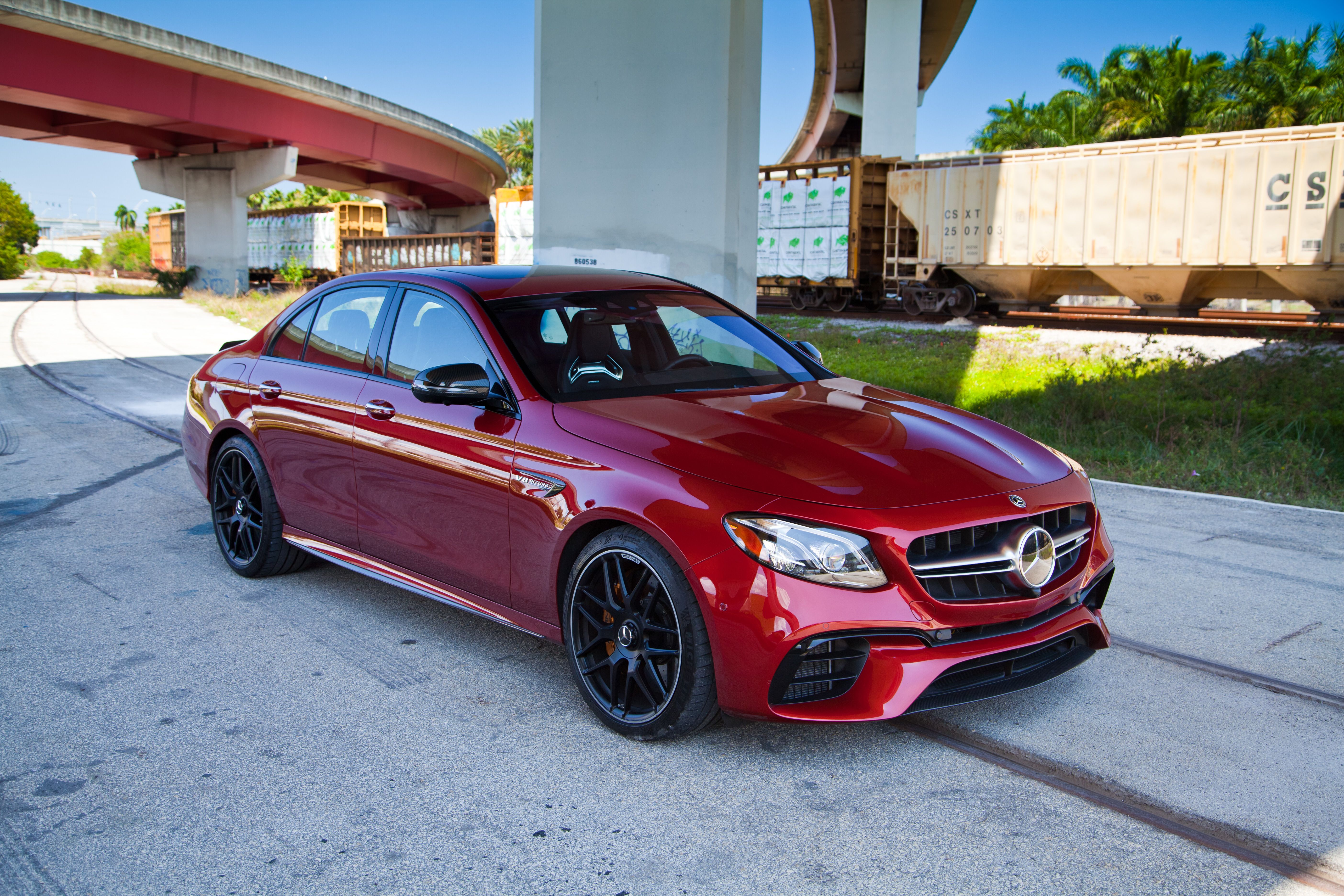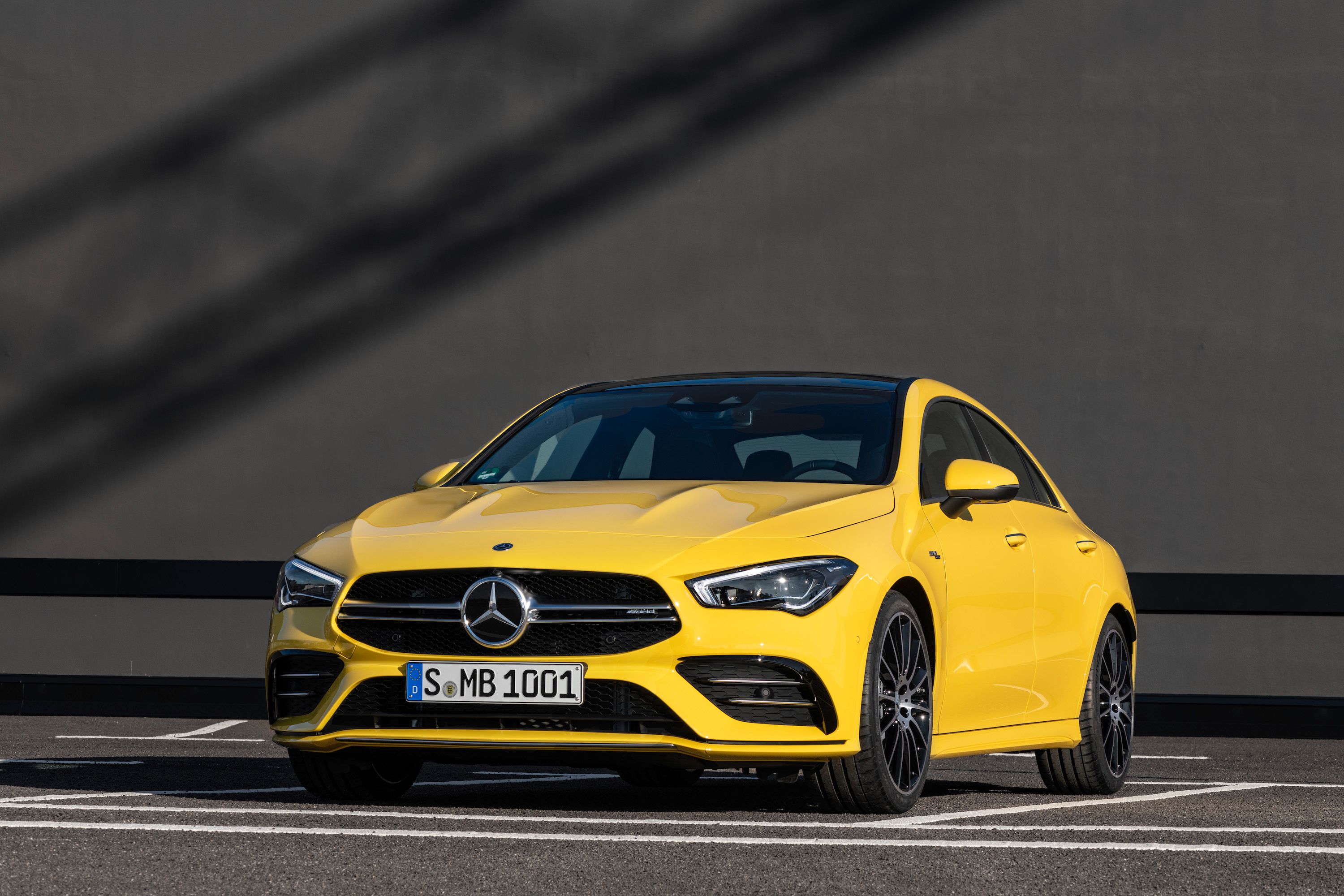It used to be that if you wanted to make a performance car, no matter the body style, it absolutely had to be rear-wheel drive. Nothing else would do. Now, all-wheel drive is becoming more and more popular, especially among the high-powered luxury sleds of Europe, and in response, AMG is looking to ditch rear-wheel drive outright in favor of all-wheel drive exclusively. It’s a bold move, and it will undoubtedly affect rivals like BMW’s division, as well as the segment as a whole.
AMG Goes AWD Only
The latest is that Mercedes-AMG is in the process of moving its entire lineup towards all-wheel drive. The news comes to us courtesy of AMG head Tobias Moers, who spoke with our friends at Autocar about the growing popularity of all-wheel drive among the performance division’s lineup of premium sports models.
“Customers have given us the answer, and most want four-wheel drive,” Moers said in an interview with Autocar. “Back in the days when we had an AMG E-Class as rear-wheel drive and with four-wheel drive as an option, over 90 percent chose 4WD. In the new E 63 with drift mode, you have a real rear-wheel-drive car but with four-wheel drive also.”
As Moers points out, all-wheel drive systems are becoming more and more sophisticated, with variable torque split that’s totally configurable by the user through simple-to-use electronic systems. That means you can have the torque sent exclusively to the rear axle at the touch of a button, enabling all the ass-out shenanigans associated with rear-wheel drive.
Of course, these systems still add a good amount of weight, and the suspension typically isn’t set-up for optimal rear-wheel drive performance and cornering. However, if it’s just burnouts and oversteer that you’re after, then systems like these really do offer a nice compromise.
Even the top-dog AMG GT coupe, which looks every bit like it should offer the old-school sports car formula of engine in front and power in the rear, will make the move to all-wheel drive. “When I ask customers about the GT, they ask me about all-wheel drive,” Moers revealed. “Regarding our competition, this is the downside of the AMG in terms of usability. People in Munich, for example, always, always ask for four-wheel drive - I think it’s for safety and stability.”
“Safety and stability” might seem like a bit of a copout for traditionalists, but that’s undeniably where we’re headed in the segment.
Autocar0}
Not only will AMG ditch rear-wheel drive outright, but it’s also looking to go small with its engine lineup, opting into low-displacement and extra boost over the traditional fire-breathing V-8s and V-12s of past AMG models.
“We are not going to push the performance output of the V-8 in future,” Moers told Autocar. Currently, models like the AMG S 63 and C 63 S come equipped with a twin-turbo 4.0-liter V-8 making well over 600 horsepower. Now it sounds like these standards could soon go the way of the dodo.
No surprise then that the top-dog AMG V-12 will follow. “We’re still responsible for V-12s - maybe Maybach is going to use them in the next-generation S-Class, but not AMG,” Moers said at the Geneva Motor Show. “Having a high-powered competitive V-12 would be a new engine, and in the new times there is no room to do that.”
So then, without V-12s and V-8s, what will power AMG’s lineup?
The E 53’s ‘six brings another potential solution to the discussion - hybrid and electrification, both of which can circumvent the problem of high emissions typically associated with high-performance applications.
Moers has backed this assertion in the past, and it’s said that the upcoming AMG GT 4-Door is expected to come with a plug-in hybrid powertrain and enough muscle to run with the 680-horsepower Porsche Panamera S E-Hybrid.
AMG Plans On Downsizing Its Engine Lineup
As goes Mercedes, so goes BMW.
At the risk of sounding like a luddite, M cars used to be razor-sharp performance cars with rear-wheel drive as standard. Now, that’s all changing.
A lot of this is in response to a changing market and moves from rivals like AMG, but it’s also a continuation of what we’ve seen in the performance SUV segment.
All-wheel drive is especially important for a high-powered, tall-bodied vehicles like the the BMW X5 M. With a whopping 567 horsepower and enough tire to smother a small state; the X5 M has the muscle and mechanical grip to run with true-blue sports cars. However, put all that output exclusively through the rear wheels, and things start to go wrong.
With that in mind, it makes sense that BMW would carry over these high-performance all-wheel drive systems to other segments as well, especially when you add in all the market pressures.
Autocar0}
The mass move to all-wheel drive from the Germans reminds me a bit of what went down in the early 2000’s when Subaru brought the WRX to the U.S. and started stealing sales from the Mustang and Camaro. Almost overnight, all-wheel drive became synonymous with performance, grip, and handling.
Beyond this cultural shift, all-wheel drive is becoming more and more important for another reason - physics.
Horsepower is extremely cheap these days, and while output claims are impressive on paper, you still need to put it to the ground efficiently to make it worthwhile.
As such, all-wheel drive is the go-to answer. All-wheels-driven makes a high-powered car easier to operate for novice drivers (actually having the option to go full throttle from time to time is important!), and it’s easier to drive on the street too (poor road quality and weather conditions can hurt grip even more).
As such, luxury European models now need all-wheel drive to entice buyers. What’s more, you gotta consider that most folks “want it all” when it comes to these expensive machines, and all-wheel drive adds a semblance of usability and daily drivability that purely rear-wheel drive alternatives can’t offer.
So what can we expect looking forward?
And, as mentioned above, all-wheel drive tends to muddy a car’s handling. Power to the front can make a car feel nose heavy, and the front tires will wash out when you really dig into the throttle, and that’s sure to piss off the purists.
Of course, all that is at the edges of adhesion, a place few consumers explore with any regularity. All-wheel drive still helps a car hold onto the road and launch off corners with ferocity. But if it’s slinking through a race course and pure driver engagement that you’re after, rear-wheel drive is still the preferred option.
With that in mind, hardcore performance cars will likely remain rear-wheel drive for some time to come. Think lightweight two-door coupes, rather than heavy luxury machines like those in the AMG and BMW M camps.
What do you think, dear reader? Is this move towards all-wheel drive and electrification a good thing, or just another example of where the industry has gone wrong? Let us know in the comments section below.
Further Reading
Read our full review on the 2020 Mercedes-AMG CLA 35.
Read our full driven review on the 2019 Mercedes-AMG E 63 S.
Read our full review on the 2019 Mercedes-AMG S 65 Final Edition.
Read our full review on the 2018 BMW M5.


